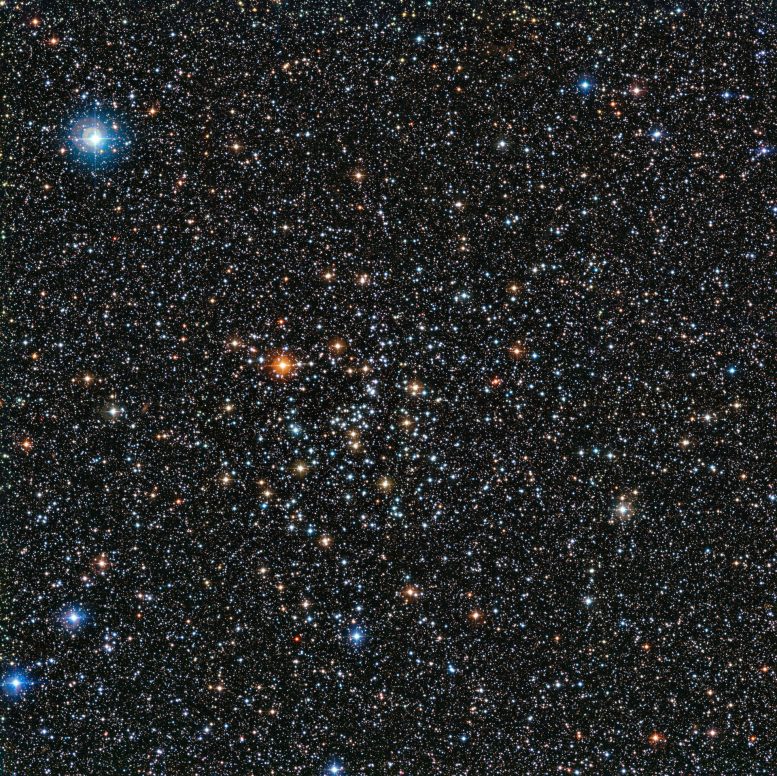
This colorful image from the European Southern Observatory shows an open cluster of stars known as IC 4651, a stellar grouping that lies at in the constellation of Ara.
Open star clusters like the one seen here are not just perfect subjects for pretty pictures. Most stars form within clusters and these clusters can be used by astronomers as laboratories to study how stars evolve and die. The cluster captured here by the Wide Field Imager (WFI) at ESO’s La Silla Observatory is known as IC 4651, and the stars born within it now display a wide variety of characteristics.
The loose speckling of stars in this new ESO image is the open star cluster IC 4651, located within the Milky Way, in the constellation of Ara (The Altar), about 3000 light-years away. The cluster is around 1.7 billion years old — making it middle-aged by open cluster standards. IC 4651 was discovered by Solon Bailey, who pioneered the establishment of observatories in the high dry sites of the Andes, and it was cataloged in 1896 by the Danish–Irish astronomer John Louis Emil Dreyer.
The Milky Way is known to contain over a thousand of these open clusters, with more thought to exist, and many have been studied in great depth. Observations of star clusters like these have furthered our knowledge of the formation and evolution of the Milky Way and the individual stars within it. They also allow astronomers to test their models of how stars evolve.
The stars in IC 4651 all formed around the same time out of the same cloud of gas. These sibling stars are only bound together very loosely by their attraction to one another and also by the gas between them. As the stars within the cluster interact with other clusters and clouds of gas in the galaxy around them, and as the gas between the stars is either used up to form new stars or blown away from the cluster, the cluster’s structure begins to change. Eventually, the remaining mass in the cluster becomes small enough that even the stars can escape. Recent observations of IC 4651 showed that the cluster contains a mass of 630 times the mass of the Sun and yet it is thought that it initially contained at least 8300 stars, with a total mass 5300 times that of the Sun.
This pan video gives a close-up view of a rich array of colorful stars known as IC 4651. It was captured by the Wide Field Imager (WFI) camera, on the MPG/ESO 2.2-meter telescope at ESO’s La Silla Observatory in Chile.
As this cluster is relatively old, a part of this lost mass will be due to the most massive stars in the cluster have already reached the ends of their lives and exploded as supernovae. However, the majority of the stars that have been lost will not have died, but merely moved on. They will have been stripped from the cluster as it passed by a giant gas cloud or had a close encounter with a neighboring cluster, or even simply drifted away.
A fraction of these lost stars may still be gravitationally bound to the cluster and surround it at a great distance. The remaining lost stars will have migrated away from the cluster to join others, or have settled elsewhere in the busy Milky Way. The Sun was probably once part of a cluster like IC 4651, until it and all its siblings were gradually separated and spread across the Milky Way.
This image was taken using the Wide Field Imager. This camera is permanently mounted at the MPG/ESO 2.2-meter telescope at the La Silla Observatory. It consists of several CCD detectors with a total of 67 million pixels and can observe an area as large as the full Moon. The instrument allows observations from visible light to the near infrared, with more than 40 filters available. For this image, only three of these filters were used.
Never miss a breakthrough: Join the SciTechDaily newsletter.